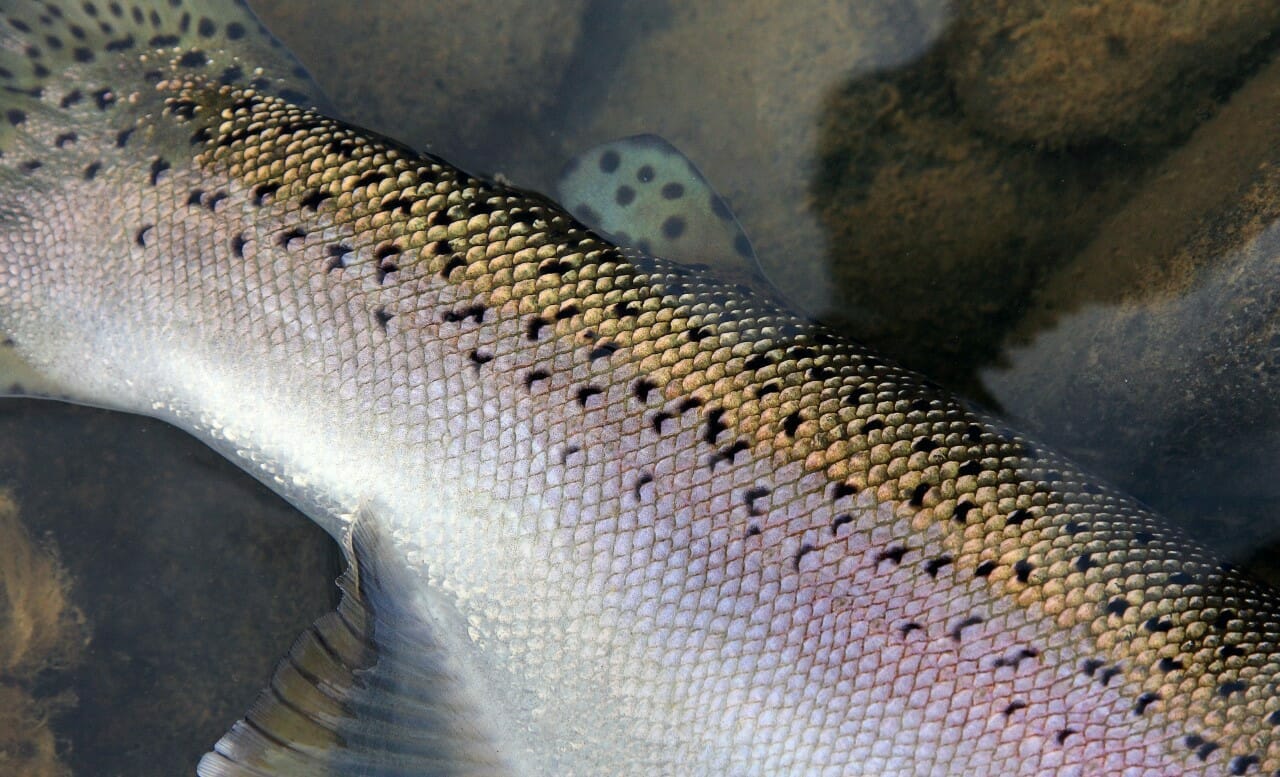The NYC and Watersheds Trout in the Classroom virtual trout tank’s alevin are looking great and especially active today. At closer look we noticed that they have developed strong fins. Eight fins to be exact.
Why are these fins so important? Not only does every fin have a function and purpose, ichthyologists also rely on meristic characters, or countable structures, such as the numbers of fins, fin rays, and scales to differentiate between different species and populations of fish.

While the adipose fin was traditionally regarded as vestigial (no actual function) today we know that this fin actually can help the trout to sense movement and sound in the water around them. This fin is also helpful in differentiating between different species of freshwater fish and sometime the difference between hatchery raised (clipped adipose fin) and wild trout.
You can learn more about trout fins and stream ecology in the Stroud Water Research Center’s Freshwater Ecology Unit.
Science Journal Question for TIC Students: What are the different parts of the trout that you can see and identify? How do the fins help a trout survive in a stream?
Dive Even Deeper: What are different vestigial body parts of humans or other animals? How or why did these attributes lose their ancestral functions? How do you think scientists were able to determine the true function of the trout’s adipose fin?




